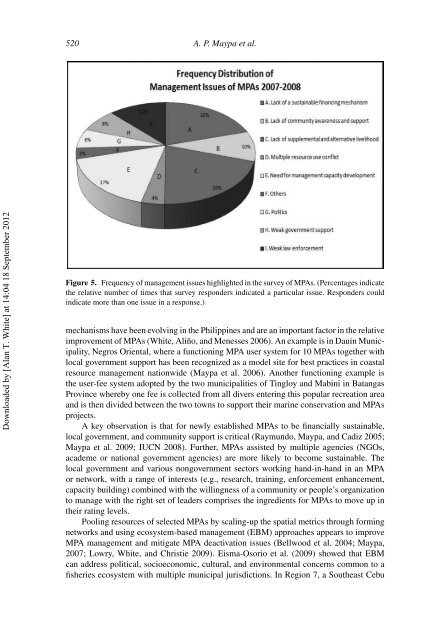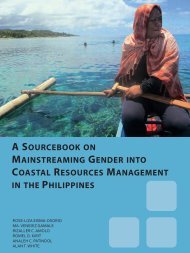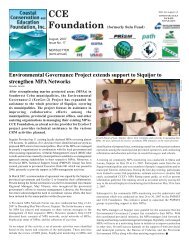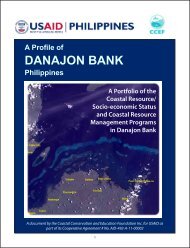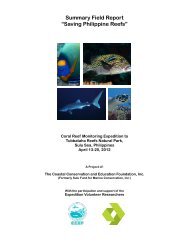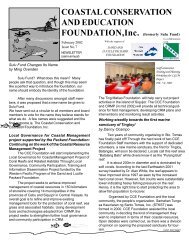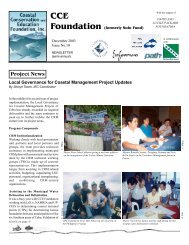Marine Protected Area Management Effectiveness: Progress and ...
Marine Protected Area Management Effectiveness: Progress and ...
Marine Protected Area Management Effectiveness: Progress and ...
You also want an ePaper? Increase the reach of your titles
YUMPU automatically turns print PDFs into web optimized ePapers that Google loves.
Downloaded by [Alan T. White] at 14:04 18 September 2012<br />
520 A. P. Maypa et al.<br />
Figure 5. Frequency of management issues highlighted in the survey of MPAs. (Percentages indicate<br />
the relative number of times that survey responders indicated a particular issue. Responders could<br />
indicate more than one issue in a response.)<br />
mechanisms have been evolving in the Philippines <strong>and</strong> are an important factor in the relative<br />
improvement of MPAs (White, Aliňo, <strong>and</strong> Menesses 2006). An example is in Dauin Municipality,<br />
Negros Oriental, where a functioning MPA user system for 10 MPAs together with<br />
local government support has been recognized as a model site for best practices in coastal<br />
resource management nationwide (Maypa et al. 2006). Another functioning example is<br />
the user-fee system adopted by the two municipalities of Tingloy <strong>and</strong> Mabini in Batangas<br />
Province whereby one fee is collected from all divers entering this popular recreation area<br />
<strong>and</strong> is then divided between the two towns to support their marine conservation <strong>and</strong> MPAs<br />
projects.<br />
A key observation is that for newly established MPAs to be financially sustainable,<br />
local government, <strong>and</strong> community support is critical (Raymundo, Maypa, <strong>and</strong> Cadiz 2005;<br />
Maypa et al. 2009; IUCN 2008). Further, MPAs assisted by multiple agencies (NGOs,<br />
academe or national government agencies) are more likely to become sustainable. The<br />
local government <strong>and</strong> various nongovernment sectors working h<strong>and</strong>-in-h<strong>and</strong> in an MPA<br />
or network, with a range of interests (e.g., research, training, enforcement enhancement,<br />
capacity building) combined with the willingness of a community or people’s organization<br />
to manage with the right set of leaders comprises the ingredients for MPAs to move up in<br />
their rating levels.<br />
Pooling resources of selected MPAs by scaling-up the spatial metrics through forming<br />
networks <strong>and</strong> using ecosystem-based management (EBM) approaches appears to improve<br />
MPA management <strong>and</strong> mitigate MPA deactivation issues (Bellwood et al. 2004; Maypa,<br />
2007; Lowry, White, <strong>and</strong> Christie 2009). Eisma-Osorio et al. (2009) showed that EBM<br />
can address political, socioeconomic, cultural, <strong>and</strong> environmental concerns common to a<br />
fisheries ecosystem with multiple municipal jurisdictions. In Region 7, a Southeast Cebu


